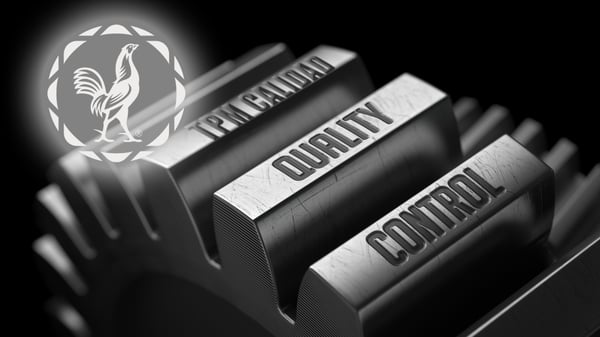
In my 17 years of experience in the Packaging Quality area of Casa Sauza, I have noticed that some of the main problems that arise in this area are: the re-works and the defects that some of our products present, among others... Find out how we've solved it with the TPM methodology:
It is one of the 8 TPM pillars, one of its maintenance strategies. Its objective is to establish the conditions of the equipment to the point where "zero breakdowns" becomes reachable. The Quality Maintenance action seeks to verify and measure the "zero breakdowns" conditions regularly, in order to facilitate the operation of the equipment in the situation where quality defects are not generated.
Quality Maintenance is based on:
- Performing maintenance actions for the equipment's care, so that it does not generate quality defects, certifying that the machinery meets the basic conditions for "zero breakdowns" and that this equipment is within the technical standards.
- Observing the variations of the characteristics of the equipment in order to prevent defects and take action before the situations of potential abnormality happen.
- Carrying out an engineering analysis of the machinery in order to identify those elements of the equipment that have a high recurrence in defects of the final product. Afterwards, we perform a control of these elements and intervene on them in order to avoid recurrence.
Quality Maintenance and Process Quality Control are Not The Same Thing.
Keeping the equipment operating is not what really matters, since it is already supposed to be highly reliable thanks to other TPM pillars. What matters is maintaining the highest standards of our product's quality by taking control of the conditions of the elements and systems of the equipment. Process Quality control is focused on the latter, while Quality Maintenance focuses on the conditions of the machinery.
Quality Maintenance Principles
The principles on which Quality Maintenance is based, are:
- Classification of defects and identification of the ways in which they occur, their frequency and effects.
- Perform a PM (Preventive Maintenance) analysis to identify the parts of the equipment that generate the quality defects.
- Establish standard values of the equipment and evaluate the results by means of a measurement process.
- Establish a frequency of periodic inspection of critical features.
- Prepare maintenance matrices and periodically assess the standards.
Analysis Tools for Quality Maintenance
The main instruments used in QM are:
- QA Matrix
- QM Matrix
- Mode Analysis of Faults and Effects.
- PM analysis
- 4m's analysis
- Focused Improvement Techniques
- Process flow diagrams
- One point Lessons
- Process capacity analysis techniques
Quality Maintenance Stages
There are ten stages for the implementation of Quality Maintenance. They should be audited and give a follow-up to the strategies of: pilot test, model equipment and knowledge transfer, that are used in other equipments and TPM pillars.
- Stage 1.- Identification of the current situation of the quipment
- Stage 2.- Research on how defects are generated
- Stage 3.- Identification and analysis of the 3M conditions (Materials, Machinery and Manpower)
- Stage 4.- Study the corrective actions to eliminate abnormalities
- Stage 5.- Analyze the conditions of the equipment in order to produce zero defects products and compare results
- Stage 6.- Carry out action and improve 3M conditions
- Stage 7.- Define the conditions and standards of the 3M
- Stage 8.- Strengthen the inspection method
- Stage 9.- Evaluate the standards that are being used
- Stage 10.-Check the established standards
 You can also come to Casa Sauza and visit our production plant so you learn on-site about all of our tequila production processes. We'd be happy to have you here and share our knowledge with you!
You can also come to Casa Sauza and visit our production plant so you learn on-site about all of our tequila production processes. We'd be happy to have you here and share our knowledge with you!
.png?width=50&height=50&name=10.CS-Redondo%20(1).png)